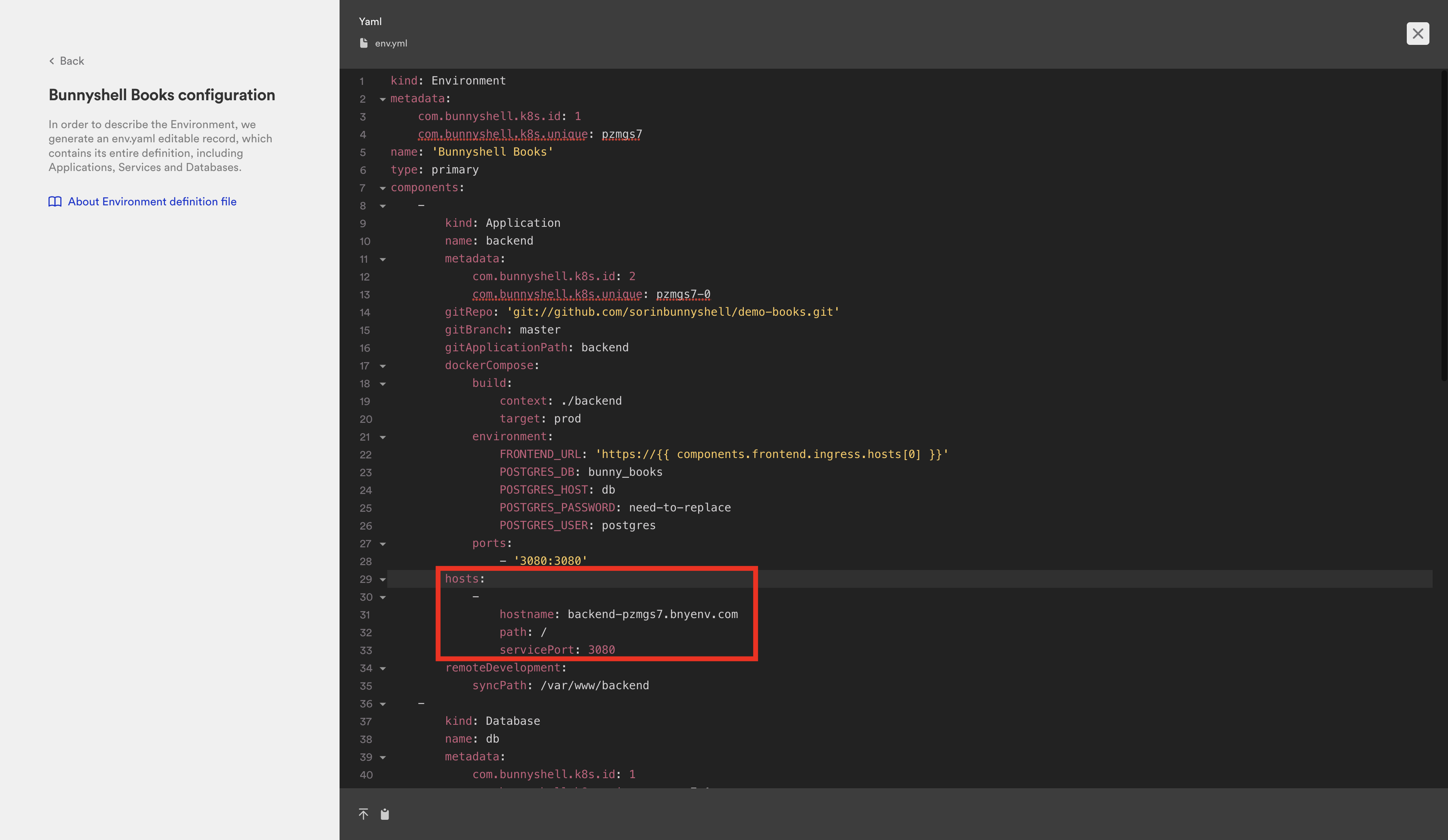Expose public endpoints
Publicly exposing endpoints
A single port (and path) can be exposed as the "main" entry point for an application.
This means that only one port will be exposed to 443 for users to be able to access through HTTPS.

NoteYou can expose multiple ports, as long as they use the HTTP protocol. You can also map them to different paths for the Ingress.
Entries contained in
components.[*].hostswill be written in theIngressof the namespace in Kubernetes.
Generated URLs
As you can see in the above screenshot, the URL for the backend is something similar to backend-pzmgs7.bunnyenv.com.
The pzmgs7 part represents the Environment unique identifier within the Bunnyshell system.
NoteBest-practice: If you want to create a template for the environment, you can use
{{env.unique}}as a replacement, when using the URL in other places, such as Component Variables. This will enable other Services, such as thefrontend(for the API URL) to communicate with thebackend, using its future, not-yet-determined URL.Example:
backend-{{env.unique}}.bunnyenv.com
DNS Records and HTTPS
Bunnyshell automatically creates DNS records and handles certificates for you.
NoteThis is done through the use of Cloudflare.
Updated 4 months ago
